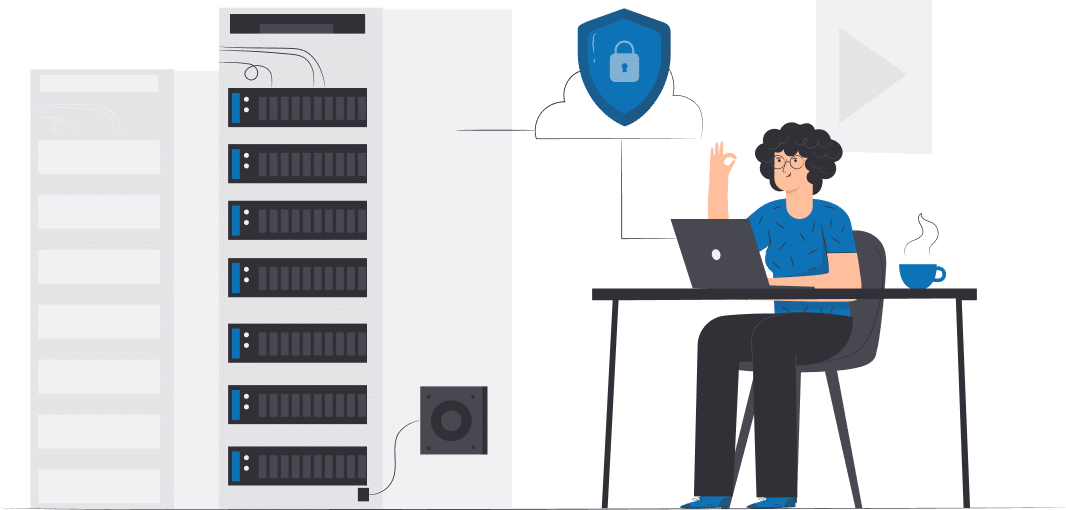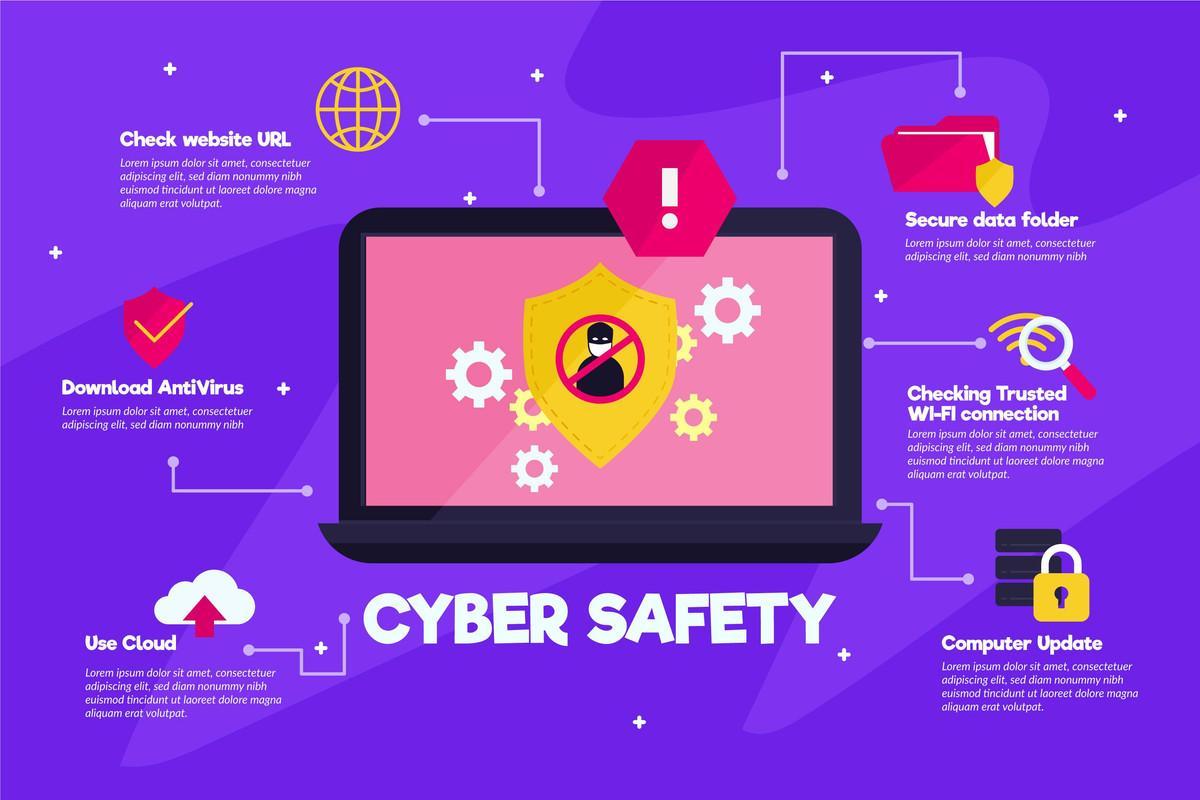The proliferation of cyber attacks and security breaches in healthcare in the last three years demonstrates that no industry can be left behind when it comes to bolstering security measures. This fact is especially true when considering the health industry as health information is often stored digitally, making it a lucrative target for those wishing to exploit the vast amounts of sensitive data available within the industry.
Healthcare security breaches can have serious implications not only on the financial side but also on the patient side, with information about medical history and health status being potentially exposed. It is essential to understand what exactly constitutes a healthcare security breach, the costs associated with such incidents, and the steps that need to be taken in order to prevent future security breaches.
What are Security Breaches in Healthcare?
Healthcare security breaches occur when access to healthcare is forced or forged with the intent to destroy, disclose, modify, or disrupt. These criminal acts can be engineered from both inside or outside a company and may include the accidental or purposeful injection of credential-stealing malware leading to the exposing of patient data to cybercriminals. In rare incidents, security breaches can also occur when a missing laptop or data storage device ends up in the hands of a cybercriminal.
Breaches in healthcare target one of many costly and valuable assets in the black market–Personally Identifiable Information (PII). Black market patronizers target patient data because it is worth over 1000x more than credit card information. According to Infosec Institute, PII data such as a patient’s health history is valued at $363. Criminals use the data to blackmail patients with scams and fraud cases or create fake insurance claims. Drug addicts and barons use PHI to gain illegal access to prescriptions for personal use.
Overview of Healthcare Security Breaches
The HIPAA violation statistics from 2023 have revealed the ugly side of healthcare data breaches in the last five years. The OCR received and confirmed a total of 4419 breach reports between 2019 and 2021, which involved over 500 medical reports. These reports show that over 314 million medical information pieces were exposed without authorization. In 2018, the OCR received a record of two data breaches per day and in 2020, 642 cases were reported. In 2021, there were 714 data breach reports, with over 500 medical reports. In 2022, that number increased and 723 reports were recorded, which involved over 500 medical data reports. Conducting a HIPAA Risk Assessment: A Step-by-Step Guide.
Recent Statistics on Healthcare Security Breaches
Even though healthcare and government regulations tighten up the security gap between healthcare data and the risk of exposure to the wrong hands, healthcare cyber security breaches are still rampant. Statistics show a staggering 30% of healthcare data breaches happen within hospitals. In the first half of 2022, hospitals reported 337 healthcare breaches, with 19,992,810 victims. In the first half of 2023, 295 healthcare breaches occurred, affecting over 39 million people, so even though less individual breaches were reported, about 20 million more people were affected than the previous year. The Escalating Cybersecurity Crisis in Healthcare: A Decade of Challenges and the Path Forward.
Healthcare organizations, clinics, and hospitals are a large target and make up 79% of data breaches reported daily. Further reports reveal that 18% of teaching hospitals have endured a data breach and IT-related occurrences and malware attacks account for 67% of total breaches in healthcare. The security breaches in healthcare in the last three years show an average increase of 25 percent. The most recent HIPAA violation statistics indicate that 34 percent of data breaches in healthcare are inside jobs, caused by disclosure of PHI or unauthorized access.
Causes of Healthcare Security Breaches
Studies analyzing data breaches in the healthcare sector and trigger factors overall show that human errors and software/system vulnerability are the key risk factors when it comes to data breaches.
Human Errors
A study dubbed The Psychology of Human Error confirmed that 88% of security breaches in healthcare are triggered by human mistakes. Negligence and carelessness by health workers, whether intentional or accidental, puts healthcare data at risk of exposure to cybercriminals. The codes of conduct for everyone working in the health sector require a commitment to protecting patient data from unauthorized access, manipulation, and destruction. Employees lacking proper training on matters of cybersecurity and healthcare safety pose a big risk as they are more likely to fall victim to ransomware and phishing threats. The only positive side of this truth is that many of these human errors weren’t intentionally elicited.
Clicking on phishing emails remains the largest risk factor, leading to increased healthcare breach cases. The second mistake healthcare workers make that exposes patient data to the risk of disclosure and manipulation is using weak passwords. Reporting suspicious activity is the norm when it comes to security and employees should be encouraged to report any suspicious activity immediately. Healthcare workers who fail to report unusual emails and unauthorized log-in attempts are actually aiding the work of cybercriminals by making it easier for them to go unnoticed.
System and Software Vulnerability
Poor software infrastructure and outdated computer systems create loopholes for cybercriminals to attack and interfere with patient data. There are varied healthcare exposure risks magnified by the existence of vulnerable software and systems in a healthcare organization or hospital. Unpatched vulnerability is the biggest threat to patient data and is also against healthcare compliance requirements. Cybersecurity experts recommend the continuous patching of healthcare software and hardware to reinforce the security firewalls around electronic health records.
Misconfigurations also create many loopholes and increase the vulnerability of healthcare data to cyberattacks. Organizations and hospitals have the sole responsibility of ensuring all software and hardware systems are configured properly, ensuring strong encryption, and minimizing outside access to sensitive patient data.
Zero-day vulnerabilities are vulnerabilities that were previously unknown to the company and are considered the riskiest healthcare system vulnerabilities because vendors take longer to release new patches to counter existing loopholes.
Insecure coding practices can also put healthcare data at risk of unauthorized access.
Recent Healthcare Security Breaches
Data breaches have decreased in the last few years largely due to organizations investing heavily in cybersecurity solutions. While cyberattacks are still rampant, enhanced firewalls and security control systems have caused the actual number of breaches to fall.
2020 was one of the toughest years in the history of healthcare and cybersecurity. As institutions battled the Covid-19 constraints, cybercriminals stepped up their game, which led to some of the largest breaches yet. The 15 Biggest Healthcare Data Breaches of 2023 (So Far)
Blackbaud Trinity Health’s third-party ransomware attack was one of these breaches, which occurred in May of 2020 and affected 3.3 million patients. By the time Trinity Health’s cybersecurity team, along with law enforcers and forensic experts, were able to intervene, the hackers had already interfered with huge datasets linked to Trinity Health. Going against HIPAA regulations and F.B.I.’s statutes against cybercriminal abidance, the corporation paid the funds the delinquents solicited to get back their stolen database. Although the convicts vowed to delete all the data manuscripts, Trinity Health tagged the infringement as one of the largest healthcare breaches of 2020.
Other Recent Security Breaches in Healthcare
The biggest healthcare data breaches in the last three years have all involved hacking and phishing attempts. Healthcare hacking activities have become more prevalent, with hackers unleashing more ransomware on their targets. Per the delinquent healthcare data breach statistics, listed here are the biggest health data breaches documented in the past 36 months:
Onetouchpoint breach of 2022
This infringement saw the cybercriminals hack into Onetouchpoint’s files, destroying them. The assault infringed on patient and medical records and impacted 2.6 million people.
Morley Companies data violation of February 2022
This was one of the largest healthcare data breaches of 2022, affecting 522,046 people. In this healthcare infringement, cybercriminals injected ransomware into Morley Companies’ systems, compromising patient’s confidential data.
Broward Health’s January 2022 data breach
In this healthcare breach, which saw 1.3 million people suffer the impacts, a compromised third-party medical provider accessed Broward Health’s patient database, doing away with huge datasets.
Shields Healthcare Group’s healthcare breach of March 2022
This incident has to be one of the most penetrative and largest breaches documented in 2022. It pertained to a cyberattack on the company’s network server, disclosing client data to unauthorized people and resulted in over 2 million people suffering the effects of their data being compromised.
ARcare’s computer system violation of January 2022
In this healthcare infringement, cybercriminals illegally accessed ARcare’s computer systems and studied and stole confidential, discrete data. The infringement influenced 345,000 people.
Impact of Healthcare Data Breaches
The consequences of breaches of electronic health records can greatly impact a healthcare facility’s finances and reputation.
Loss of Sensitive Patient Data
Cyber attacks and security breaches in healthcare expose a patient’s financial, personal, and health data to malicious personalities who might leverage the opportunity to scam and manipulate the victims. In the last 10 months, healthcare facilities have recorded over 360 data breaches, which saw thousands of patients facing rough times having to recuperate from the emotional and mental torture exerted on them by cybercriminals. Cybercriminals have the market ready to sell patient data as the black market grows bigger.
Financial Loss
Healthcare cyber security breaches lead to data breaches costing the industry over 10.93 million dollars. These costs are incurred in fines, patient claims, and data recovery. All healthcare organizations and facilities must stick to HIPAA regulations or risk facing steep penalties. HIPAA uses a four-tier violation penalty approach, fining offenders up to $50,000 per data record affected.
Health organizations and facilities with cases of data breaches spend unbudgeted money to restore their lost glory and pay for forensic investigations. When a patient loses their personal, healthcare, and financial data to security breaches, they lose trust in those healthcare businesses and may not want to use them in the future. The eroded trust loses the company business, leading to an overall loss in finances.
Cyberattacks also disrupt routine business procedures in the healthcare industry, causing delays in service delivery and costing a business work hours. In some instances, data breaches can even lead to legal lawsuits which can incur costs such as fines and legal service fees.
Damage to Reputation
When it comes to reputation, having any number of data breaches may lead to larger reputational issues. Having a bad reputation in regards to healthcare data can result in patients losing trust in the healthcare institution, which overall will lead to a loss in service due to the lack of trust in patient data security. Even a small and well contained or quickly combated breach to an establishment can garner a lot of fear, especially in this day and age where news and media spreads quickly. Negative news tends to spread faster and deeper, which could leave a permanent dent in a hospital’s reputation.
As the spread of data healthcare breaches intensifies, patients may start to disassociate themselves from the hospitals and healthcare centers which can destroy existing customer relationships and cut short prospective ones.
Cost of Healthcare Security Breaches
Incidents of breached electronic health records (EHR) are a drain on healthcare facilities and can really test the resilience of an institution. If it is not about withstanding the negative media coverage and customer loss, it is about investing company profits to mitigate the cyberattack. Listed below are some direct and indirect costs that relate to healthcare security breaches.
Direct Costs
When a data breach occurs, it takes expertise and proper resources to detect the incident, determine the impact, and develop a mitigation strategy. The investigation process requires experienced cybersecurity experts to run multiple system tests in order to identify the source of the attack and the level of damage. After determining the events of the attack and identifying related mitigation strategies, healthcare facilities also have to notify affected individuals of the breach. This process can require additional resources, including the cost to mail letters, install call centers, and even hire more people to manage these jobs as well as further consumer inquiries.
Healthcare facilities have to further invest in providing top-notch credit monitoring services to those with affected identities. These services exist in order to assist parties whose data was stolen to detect and resolve prospective identity theft threats. Organizations facing a data breach scandal must also invest in legal services to defend their interests in case of lawsuits. Most breaches in healthcare also signify a violation of data privacy laws, which can attract hefty regulatory fines.
Indirect Costs
Organizations facing data breach scandals will have to budget for the long-term costs associated with rebounding after a breach, which can be a financial burden. Data breaches affect service delivery and customer satisfaction, leading to a loss of business and, as a direct result, a decrease in revenue as well. A damaged reputation can take years to rebuild and in the case of healthcare organizations, it can greatly affect business profitability.
Another indirect cost from a data breach is that affected clinics and organizations have to budget for the increased IT costs needed for reinforcing existing security measures and implementing robust preventive measures. A third cost comes in relation to time worked as data breaches affect the overall productivity of employees. When a breach occurs, all efforts are directed to issues regarding the breach. Due to this reallocation of time and resources put towards mitigating breach damages, fewer hours will be worked in regards to the business at hand, but more money spent overall.
Implementing a Security Plan
Cybersecurity is an integral element in every solution-based security plan for healthcare organizations of all sizes. A large number of healthcare organizations rely on technology to improve their data storage and transmission. This puts them at a higher risk of experiencing cyberattacks, which can be detrimental if the right security measures are in place. Making Sense of Healthcare Cybersecurity With the Right Services.
The Role of Cyber Security Solutions in Healthcare Sector
Cyber security solutions are a combination of robust and efficient services and tools that establish protective layers to protect organizations against cyber attacks. These application systems protect against common types of data breaches that lead to app downtimes, reputation damage, compliance fines, and sensitive data theft, and also prevent data breaches at different stages of healthcare security implementation.
Endpoint security systems guard your data reservoirs and computers against malware attacks and unauthorized access to patient data and sit on endpoint devices like employee workstations and servers.
Network security systems monitor a network’s traffic to uncover malicious traffic and alert cybersecurity experts to block and filter the traffic and strategies for effective mitigation and are installed on internet and network devices.
Internet of Things (IoT) security systems provide healthcare organizations with more visibility over the functions of different devices, enabling the implementation of security controls to optimize the safety of IoT devices. Cloud-based security systems provide the tools and resources needed to detect security misconfigurations and vulnerabilities while assisting with remediation.
Cybersecurity solutions serve many roles, from accessing an organization’s control systems to regulating access to sensitive systems and data to building firewalls to block unauthorized access to networks and some solutions can scramble healthcare data intentionally to make it hard for cybercriminals to comprehend.
Steps for Developing a Robust Healthcare Cybersecurity Solution
Cybersecurity teams have the responsibility of devising and implementing robust cybersecurity solutions that guarantee ease of risk identification, threat prevention, and attack mitigation. Organizations and businesses specializing in healthcare services need to follow the right steps to develop and implement an effective healthcare cybersecurity solution.
- Start by identifying and assessing risks: A cybersecurity expert must assess an organization’s vulnerability to cybersecurity threats and identify potential risks. The goal is to understand the vulnerabilities and threats an organization is exposed to, as well as the assets that may suffer in the event of cyberattacks.
- Developing a practical security policy: The second step involves devising solution-based guidelines and rules to direct the organization’s asset protection. This considers the cybersecurity training level of employees, the security infrastructure, and the technologies used within an organization.
- Implementation of proper security controls: Every organization has specific procedural and technical standards for shielding their assets against breaches. This step requires putting all these security controls into proper use by implementing them correctly.
- Monitoring and testing the security controls: After implementation, security controls need continued monitoring to verify their effectiveness. The purpose of this step is to ensure all security measures are working correctly in optimizing an organization’s safety against cyberattacks.
- Training and educating workers: Employees need to be on the same page with the in-house cyber security team in ensuring proper handling of patient’s health information. Employers take center stage in the fight against cybercriminals. Therefore, their knowledge of how cybersecurity solutions work, the proper implementation of security controls, and the proper handling of patient data is paramount. Enroll workers in programs that train on cyber security and prevention measures.
- Lastly, organizations must step up their incident response game: Cyber attacks happen daily, and it is only a matter of time before you experience one. Having a robust strategy for responding to cyberattacks can be a lifesaver.
Possible Impact and Cost of Security Breaches
To stop these hazards and safeguard organizations from encountering costly violations, implementing security plans is highly recommended. Organizations need to set up powerful cybersecurity approaches to manage cybersecurity problems more effectively. These include proper strategies for assessing risk, responding to incidents, and managing vulnerabilities.
Need for Strategic Cyber Security Solutions
Organizations must adopt the latest and most efficient cybersecurity solutions to effectively safeguard patient data and mitigate data breach threats. There are many of these solutions, from vulnerability management to intrusion detection and prevention systems and more. It is also equally important to train workers on the use of cyber security systems and software to equip them to quickly and efficiently handle cyber threats as they come.
Final Words
Cybersecurity threats are continually becoming prevalent, especially in the healthcare industry. As more healthcare organizations transition to cloud storage systems, cybercriminals have concentrated on improving their cyberattack game. The last three years have seen the largest healthcare security breaches, which were not only severe, but also penetrative. We can expect this trend to gain more traction in the coming years.
Cyber security breaches in the healthcare sector often lead to the loss of massive datasets, financial losses, and significant harm to patients and health organizations. Organizations can incur massive financial losses after a healthcare data breach related to lost sales, costly remediation procedures, and legal fees.
Organizations facing data breaches have to deal with regulatory sanctions, which come with hefty penalties and fines. Cybercriminals who have access to patient data illegally can also cause psychological and physical damage. The dents in an organization’s reputation caused by healthcare data breaches, in addition to being expensive, can take years to restore.







